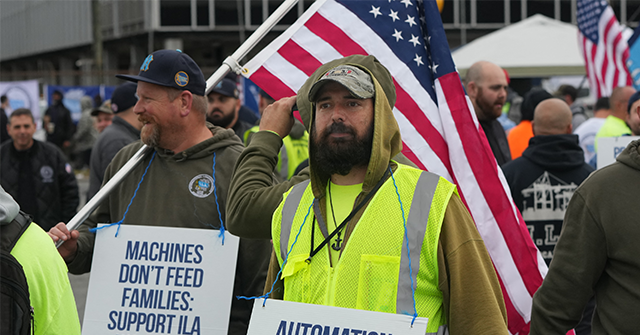The ongoing debate regarding automation at East and Gulf Coast ports is not just a simple labor dispute; it embodies a deeper question concerning the distribution of the benefits derived from automation against the backdrop of the economic strain it imposes on workers and their communities. President-elect Donald Trump’s recent endorsement of the International Longshoremen’s Association (ILA)’s dockworkers highlights the complexities of this issue. The conflict encompasses vital aspects of economic fairness and the treatment of workers in industries facing technological advancements. The central inquiry revolves around whether the anticipated benefits of automation can genuinely justify the significant economic disruptions experienced by the longshoremen whose livelihoods are jeopardized.
To shed light on this dynamic, economist Ronald Coase’s influential concept of social cost offers a critical framework. Coase suggested that when parties can negotiate freely, they can resolve disputes about costs and benefits for an efficient outcome. In the context of the docks, if the efficiency and profitability claims regarding automation hold true, port operators should be able to present concrete compensation packages to workers impacted by technological transitions. This compensation could take various forms, including early retirement plans or profit-sharing models that equitably distribute the future profits of the ports among those who depend on them for their livelihoods. Coase’s analysis intimates that if the operators are unwilling to offer adequate compensation, it raises doubts about the actual benefits derived from the proposed automation, implying that the claims of efficiency may be over-exaggerated, revealing an underlying reluctance to acknowledge the real economic costs to their workforce.
Trump’s support of the ILA is pivotal, positioning him distinctly on the side of American workers while calling for corporate accountability concerning the implementation of automation. By emphasizing that the financial savings realized through automation do not equate to the distress and harm inflicted on American workers, he reframes the conversation away from mere technological advancement. It raises a fundamental question: if automation is genuinely transformative for efficiency, why are port operators ambivalent about compensating workers adequately? The silence of corporate leaders on this point may suggest that the purported advantages of automation do not sufficiently outweigh the harm inflicted upon those who stand to lose their jobs due to these advancements. Trump’s perspective echoes a sentiment that workers should not bear the brunt of corporate gains derived from technological progress.
The dilemma extends beyond the immediate negotiations between the ILA and the employer representatives at the United States Maritime Alliance; it represents a more extensive test for the corporate sector as a whole. As the labor movement observes this unfolding dispute, it becomes evident that the stakes are high not only for dockworkers but also for broader labor rights across the nation. The ILA comprises roughly 45,000 members who have already achieved significant wage increases, yet the looming issue of automation remains unresolved, hinting at a larger transformational moment for labor in America. This situation may serve as a precursor to more widespread labor conflicts as developments in artificial intelligence threaten traditional jobs and the benefits of technological advancements continue to be debated.
As negotiations develop, the ILA and workers involved must recognize their inherent property rights, particularly regarding their own labor and dignity in the workforce. The workers possess a fundamental bargaining tool—the capability to withdraw their labor from the equation under specific conditions. If port owners are intent on pursuing automation, they will need to ensure that compensated transition plans adequately address the financial and emotional toll that such changes entail. The fundamental premise is that if the purported benefits of automation are as significant as claimed, then resolving the ILA conflict should straightforwardly involve compensating the workers adequately, illustrating a genuine ideological alignment with free-market principles that insist on fair exchanges.
In conclusion, Trump’s backing of the dockworkers symbolizes a broader challenge to the established narratives surrounding economic progress and technological innovation. It reinforces the argument that any advancements in automation should not come at the expense of workers’ rights and livelihoods. Trump’s position invites a large-scale reassessment of how society values workers in the face of rapid technological changes. It underlines that if automation cannot account for the socioeconomic repercussions it incurs, then it may not embody the ideal future that has been promised. Such a reevaluation may incite critical conversations around ethics and responsibility in business practices, as the narrative shifts toward prioritizing the welfare of workers as part of the broader conversation about economic advancement in the rapidly changing landscape of contemporary labor.

